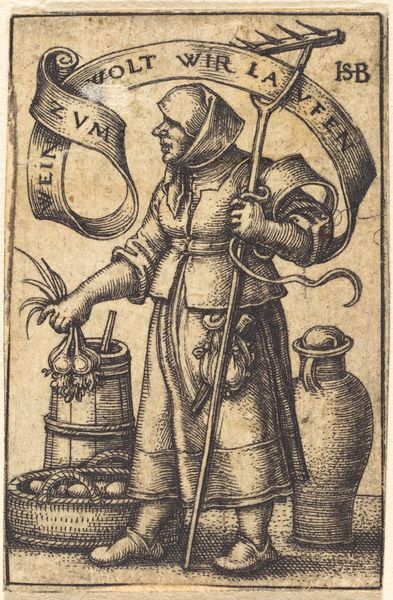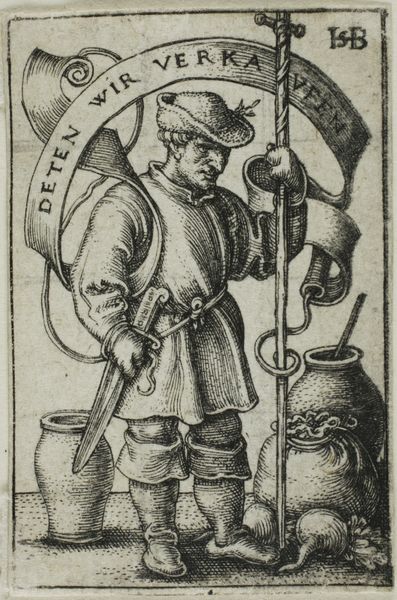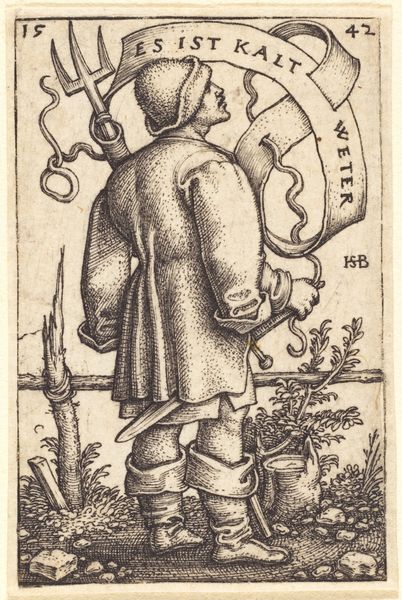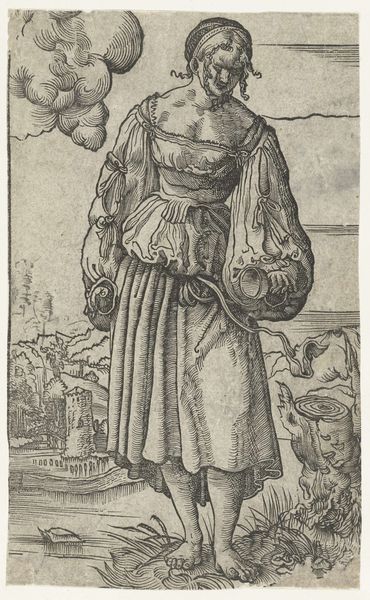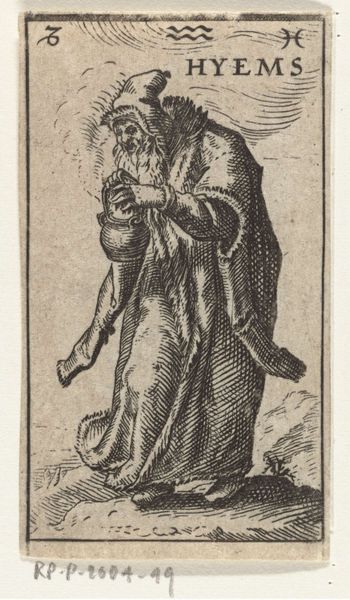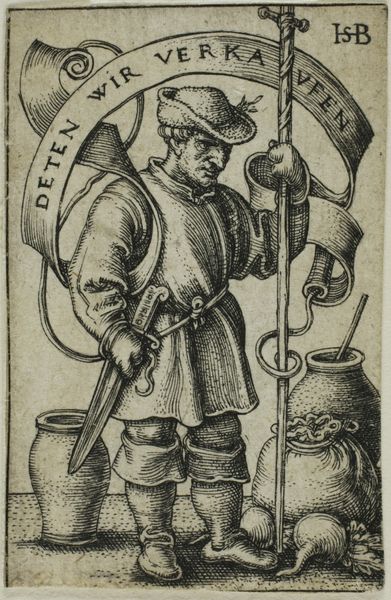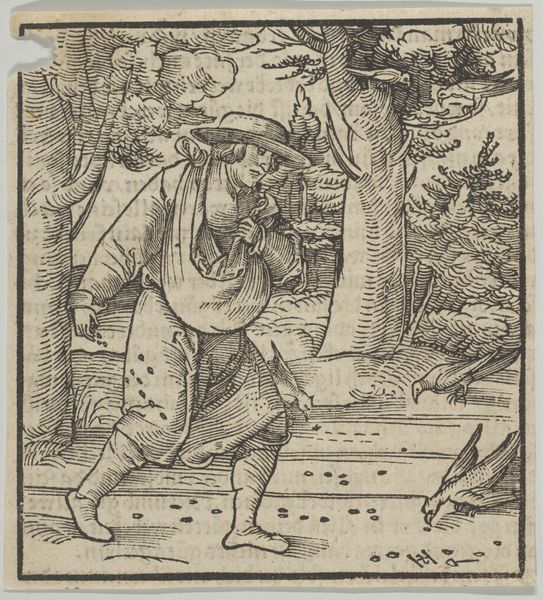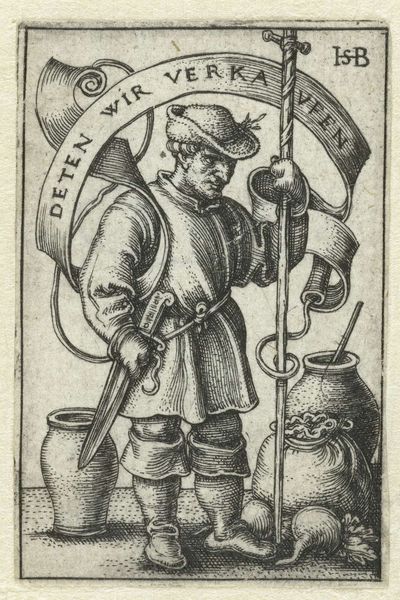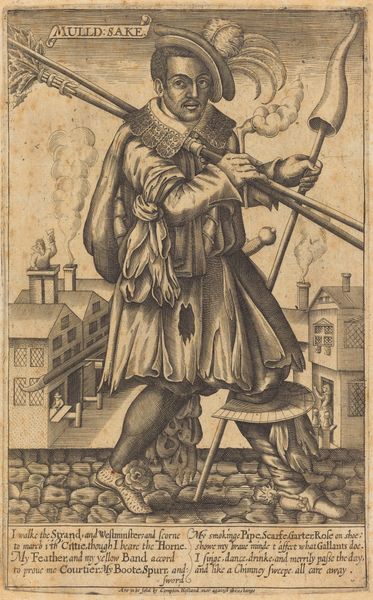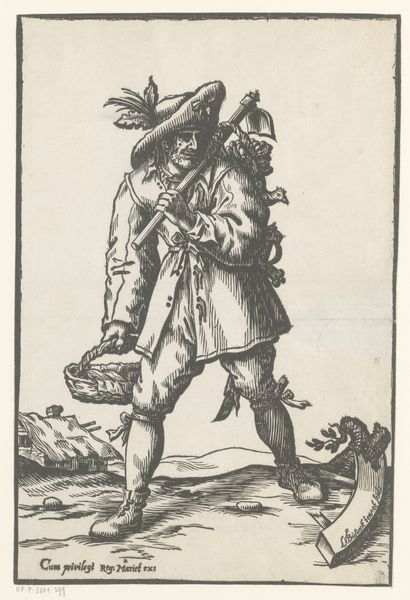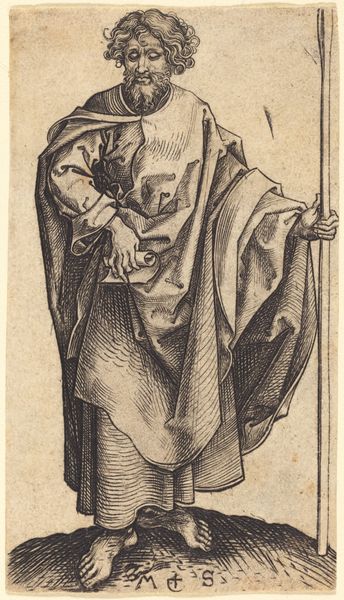
#
pencil drawn
#
toned paper
#
light pencil work
# print
#
pencil sketch
#
personal sketchbook
#
pencil drawing
#
coloured pencil
#
pen-ink sketch
#
sketchbook drawing
#
portrait drawing
Dimensions: sheet (trimmed to plate): 4.2 × 3 cm (1 5/8 × 1 3/16 in.)
Copyright: National Gallery of Art: CC0 1.0
Barthel Beham made this tiny etching of a peasant woman with two jugs in 1524. It’s fascinating to consider how a commoner came to be the subject of a work of art at this moment in Germany. The Reformation was in full swing, and artists like Beham and his brother were interested in the everyday lives of ordinary people. This woman isn’t idealized. She wears practical clothing and carries heavy jugs. Her presentation implies a commentary on the social structures of the time, reflecting the shift in cultural values that accompanied the religious revolution. While earlier art often celebrated wealth or high social position, now there was room for simple virtue. To fully understand this etching, we can look at the artist’s biography, the history of printmaking, and the changing role of the peasant class in 16th-century Germany. These diverse resources help us to better understand the social context that shaped Beham’s art.
Comments
No comments
Be the first to comment and join the conversation on the ultimate creative platform.
